Creating commons from a construction site in Ljubljana
Published 2 December 2019 by Ewen Chardronnet
Onkraj Gradbišča garden in central Ljubljana ia a loosely organized commons for gardening, woodmaking, performance arts, sound sculptures and biohacking. Makery met two of its founders.
In 2016, Ljubljana, capital of Slovenia, was named “Green capital of Europe” for its integrated strategy for sustainable development, progress in raising environmental awareness among its population and the implementation of several green measures within the city during the decade after it joined the European Union in 2004. Among these actions, an important part of the city’s strategy was revitalizing urban agriculture.
The reason is partly due to history. In 2007, the municipality of Ljubljana created a workgroup based on the observation that during the transition period following the collapse of Yugoslavia, family gardens had greatly developed in resilience. In 1985, agricultural and family vegetable gardens in Ljubljana covered approximately 138 hectares; ten years later they covered 259 hectares—a huge area for a population of around 270,000. Yet this resilient development also led to serious environmental problems: impact on water both above and underground, contamination of the soil and plants, installation of gardens in hazardous industrial zones, etc. In an effort to solve the problem of these anarchically growing vegetable gardens, the city began to gradually close problematic gardens. Some were converted into parks, while others were assigned to renovation. In 2010, the area of urban vegetable gardens dropped to 168 hectares. And the new urban plan was set into action, as Ljubljana moved forward with good pratices.
It was about time, as in the wake of the social consequences of the 2008 economic crisis, there was a growing demand to reopen family gardens. An iconic example of resilience and solidarity after the financial crisis is the opening of shared vegetable gardens by a new generation of young families. The garden called Onkraj Gradbišča (“beyond the construction site”) made its debut in 2010, first as an action by the cultural organization KUD Obrat, which invited artists to intervene for one month during the Mladi Levi performing arts festival, on a 1000m² site located in the city center not far from Ljubljana station, that had been abandoned and closed off for several years. As the landowner of the site, the city accepted the temporary usage of the site by the organization. Then, based on initial results and interest expressed by the local neighborhood community, the city renewed their permission to prolong the experience.
During the year that followed, the urban site was open to the public and to discussions regarding its possible future uses. Once a virgin field, the site is now a luxurious shared garden where neighborhood residents come to grow tomatoes, herbs and various flowers. We met two of its four original founders, Urška Jurman and Stefan Doepner.
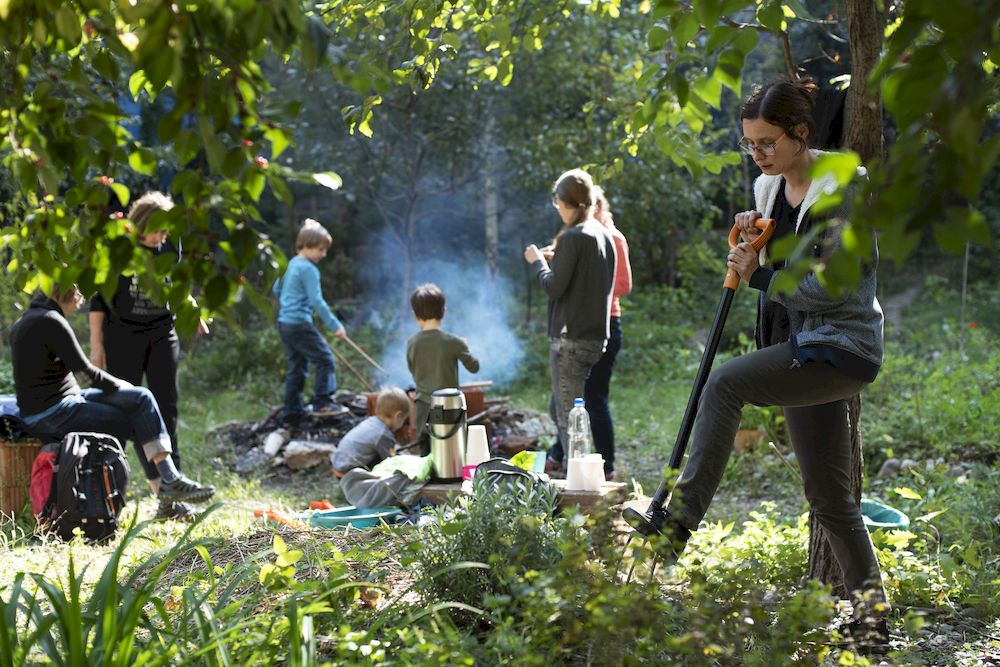
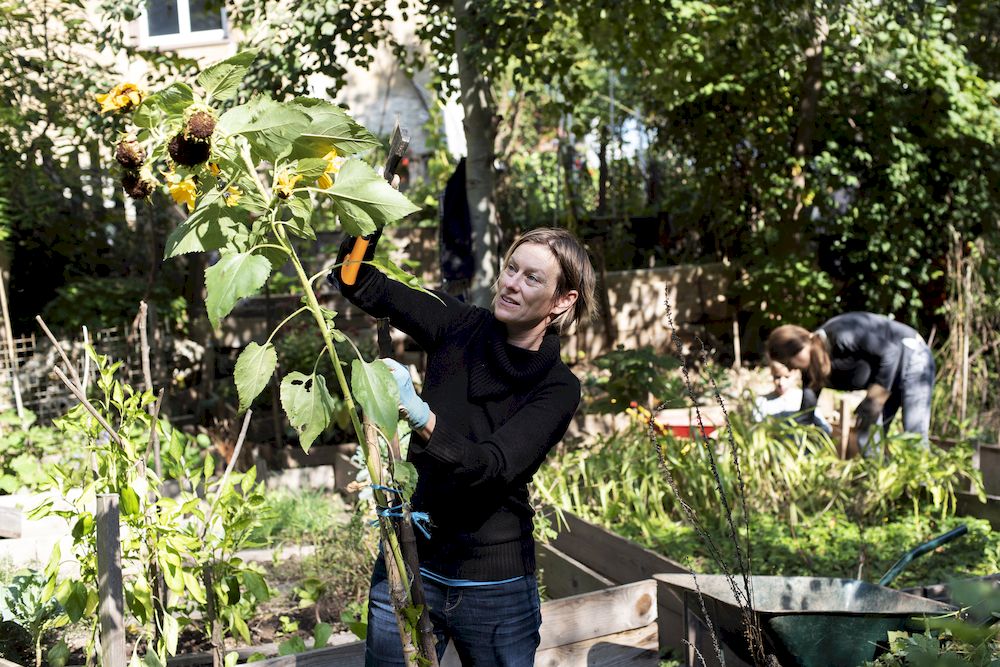
Makery: How did you come to be involved with this site?
Stefan Doepner: First it is important to know that before, here it was a construction site, it stayed 15 years at least like this, it was even typically a temporary parking lot at some point. There was a fence, but people were going over it, there were some junkies using some parts, lots of garbage. We did some research to find out who owned it and asked the city if we could use it, as only a small part did not belong to the city, and we were lucky to get support from a second mayor, who is also an architect by profession, and was interested in supporting it. In 2010, we sent letters to invite people from the neighborhood to come for a meeting to discuss what could be here.
Urška Jurman: Yes, but the whole thing started with a cultural intervention for a performance art festival by an institution operating from around the corner. The festival had one program focusing on this neighborhood, the Tabor neighborhood, on greenhood city spaces, social spaces in the city which are not somehow under consumption regulations like bars, and we, as a group of artists and art critics, found quite unbelievable that such a big area like this was for so long enclosed, so we approached the producer to see if they would support us to do something here. Our idea at the beginning was not that here it will be gardens, because our first intention was to make the space accessible to the people who live around it and and are concerned by this place at many levels. So to start to see what would make sense here, we held meetings, did interviews, worked with the art organization who had done an anthropological research on the whole neighborhood, and it came out that what people miss the most here is green spaces. It’s hard to get garden plots in the city center, because the city gardens are on the periphery. Also in previous years, the city was evicting many people who were doing illegal gardens, with an estimated 2000 garden plots, but at the same time their policy was not fast enough to replace the number of gardens that were erased. So this was the context in which we started in spring 2010.
First it was for two weeks, the duration of the festival’s permission to use the area, but we were aware that once you start, it is easier to prolong than to start from scratch. The fact that we had a strong producer behind it was a kind of a guarantee for the city to release the permission easier, as it would have been for a group of 4 people from the neighborhood. Polonca Lovšin, another of the founders did an action, “plan with the goat”, where she stayed one full day in the space with a goat, following the goat’s behavior and mapping according to the goat—as a commentary on how planing is usually made rationally.
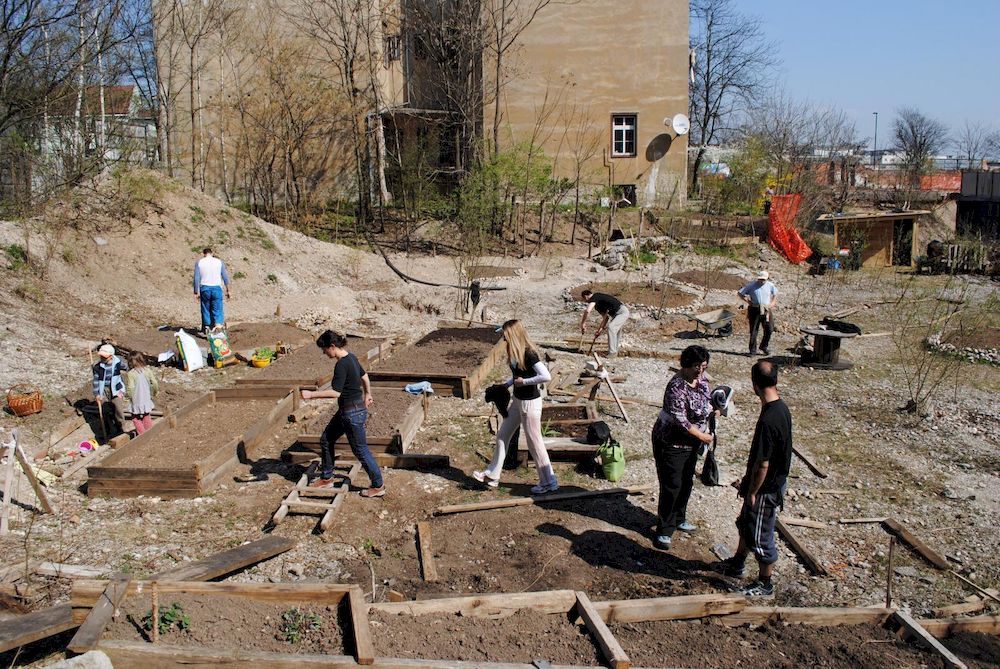
Makery: How did you convince people to join the project?
Urška Jurman: We then spent half a year communicating about possibilities and cleaning and cleaning more this construction dump. At the beginning not a lot of people from around joined. They were commenting nicely on the fact that something is happening, but few came to join us in cleaning and so on. So, at the beginning of 2011, we started to ask ourselves for whom we are doing this, do we have some problem in communication, etc. We were first communicating very openly, “common green area”, and it was hard to people to attach to this. So we started to communicate on the possibility to “make your own garden”, saying that every Saturday we were going to be here and inviting to come if interested. And it worked: 20 people came and immediately started to work.
We had established three basic rules: 1, You make your own garden, because we didn’t want to manage the whole space and preferred that people invest a lot in the early stage so that they become more attached and responsible in relation to the place; 2, Beside your own plot you have to take care of common things, because we have to manage this common area together; and 3, No pesticides and herbicides. Some started with common plots, but with the number of people it would be also many individual plots, just following the rules of a community garden. Once a week we have open hours, where people come to meet for working actions. They pay 20 euros per year as a contribution, and with this we cover all costs, not being concerned by who has a bigger or a smaller plot.
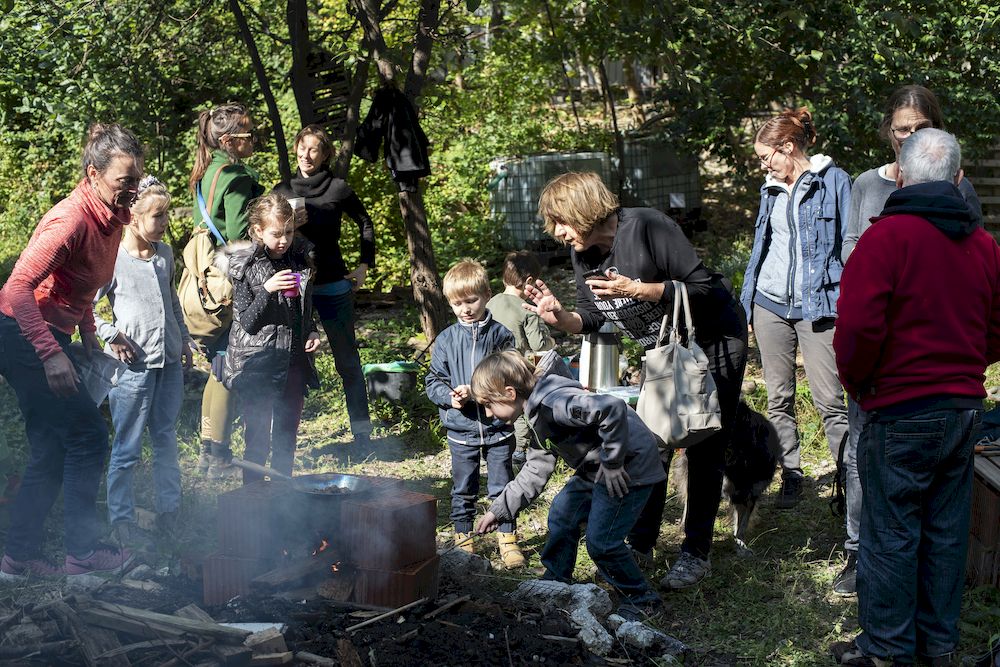
Stefan Doepner: One problem was that we were seen as organizers, mama and papa, when something was not working, or missing, when there were some bees or wasps, too many mosquitos or whatever, they would write to us. So we decided to organize who can alternatively be collecting the money in order to fill the water when the water is empty instead of writing and waiting, etc. We have 6-8 cubic we fill from the roof of the house next to it or we fill it from the city and pay for it.
Urška Jurman: Now we actually have a sponsorship, where we get 5 refills a year, that we never came to need more. With climate change there is a lot of heat but also a lot of rain, so we collect from the roofs, a kind of permanent source.
Stefan Doepner: It was important for us that we are not one organization running that garden. We wanted to initiate it and be the body that can be a reference to the city, but we didn’t want it to give any one person the power to run it, without being at all responsible for maintenance, thinking the users should commonly take care of the space.
Urška Jurman: Our association signed a formal contract with a city that we renew each year. The contract still says that if the city has a project in this space, then we will have to leave.
Stefan Doepner: I did one of my NanoSmano here in 2012 with Marc Dusseiller from the Hackteria network. We made a hut for two weeks and brought a bunch of weird artists sitting here in the summer, doing microbiologic stuff and electronics, bringing a funny mixture of people. So it combined the people and typical audiences from Circulacija2, the space where I work, and neighbours, old ladies working in the garden, etc. I always enjoyed doing things here, but each time we have content built on a certain orientation, like last time it was public speech made with electricity.
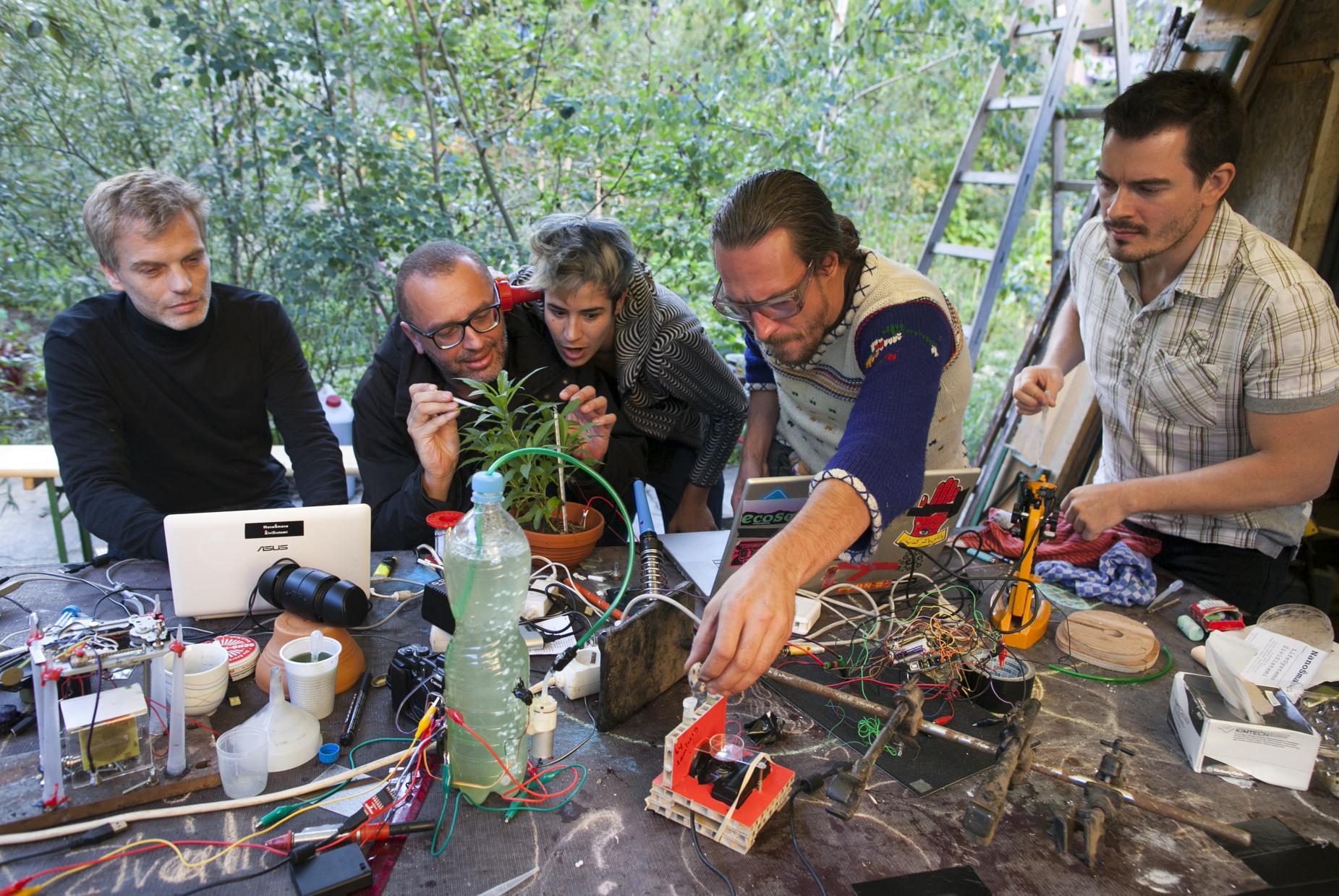
Urška Jurman: Last June we hosted Polonca Lovšin and her project, “Movement for public speech”, where people had to paddle, or move something to generate electricity, something she did in collaboration with Stefan.
Makery: The project was also presented in 2017 in Strasbourg…
Stefan Doepner: Now there are more of them and they have to do it in synchronicity, something that makes it even harder. (laughs)
Urška Jurman: They charge the sound system, so it means that if you want to give a speech to the public you need a certain degree of support. She connected partly with slam poets from Slovenia. We also did an open call for contributions and people were sending fictions, poetry, theory, on the topic of everybody’s land, common land.
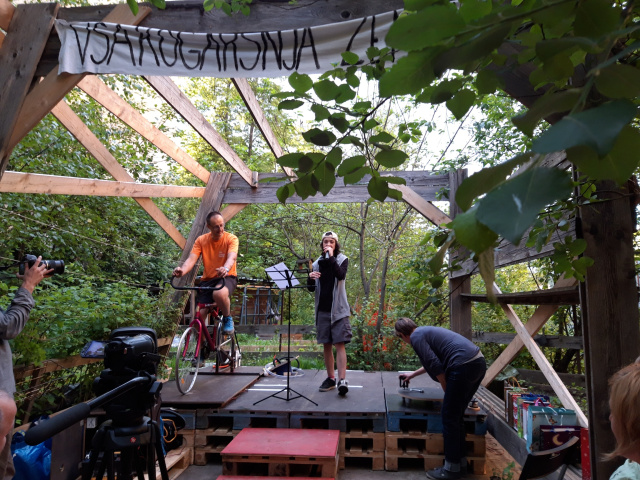
Makery: Has the site evolved over the years?
Urška Jurman: Actually the trees are growing fast, so it becomes harder and harder to do gardening, as there is more and more shade. Also we always had to bring the soil, so when we entered here we worked with a wild plants specialist, who could tell us what was already growing here.
Stefan Doepner: First, when we came, most present were invasive plants. So we had to make the distinction between what to keep out and what to help grow—doing workshops to know what we could do with the leaves or the wood of those invasive plants, making paper, growing mushrooms, building furniture, etc. We had a lecture on alternative management of invasive plants because there was a lot of Canadian goldenrod, which is good for the bees at the end of the season.
Urška Jurman: The group grew from 20-something to about 100 people, including children. This year it’s around 70, because lot of young families joined, from the neighborhood but also the broader center. Some are really producing vegetables for consumption, but for most of them it is a learning and testing place, to show the kids how to plant something, how to grow something, to take care of something. And of course, it is a nice wild area to be in and play, and sow and nail, etc.
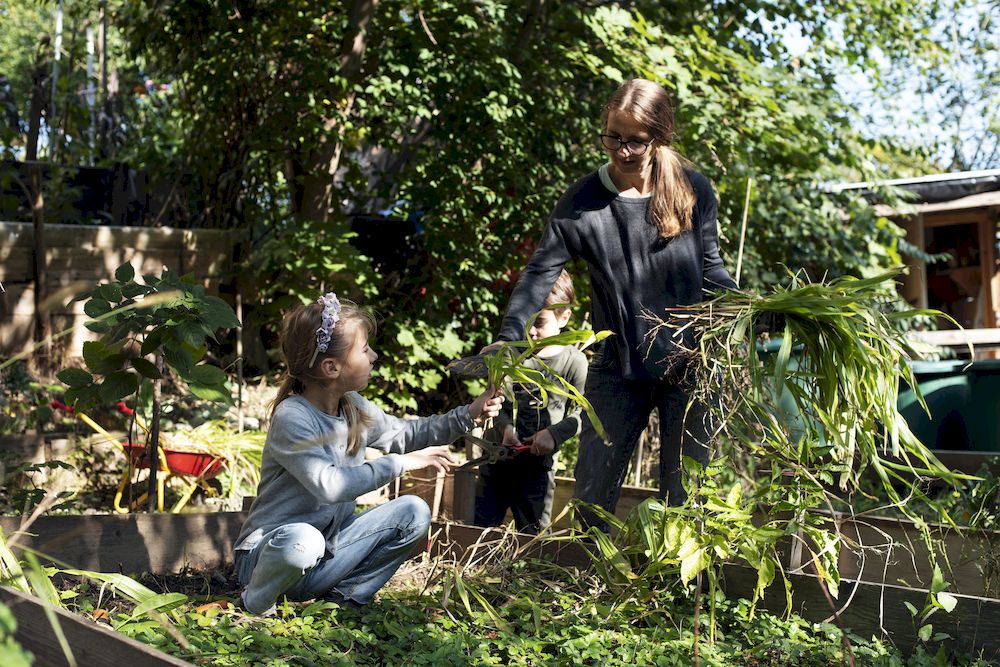
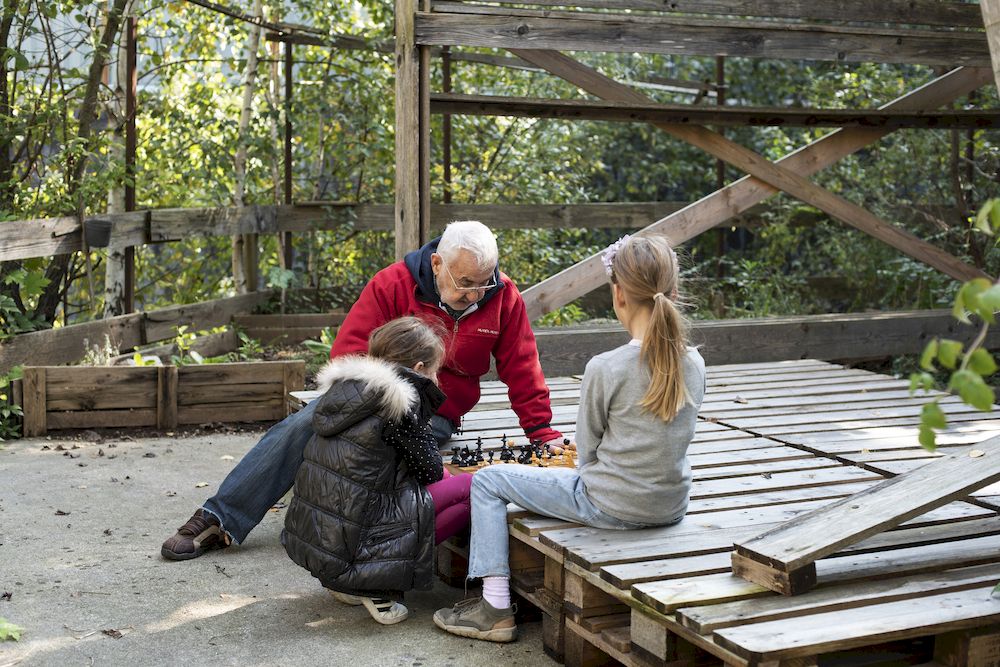
Stefan Doepner: There are also some old ladies who grow flowers, as they are happy to have a place where they can meet people, younger generations. It is a social place, with various intentions among the people who come.
Urška Jurman: Once a year we come together to welcome the newcomers, but also to see if some rules are obsolete. It is a way to come together. Once a month we have a joint working action. And this year we agreed that within one whole season, except summer when too many people are away, you have to join at least two of these actions.
KUD Obrat website and blogsite of Onkraj Gradbišča garden in Ljubljana
